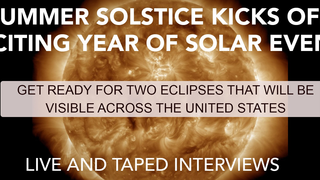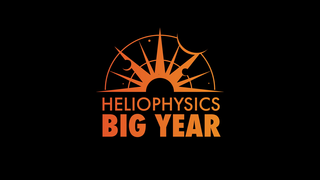Earth
Sun
Planets and Moons
ID: 5086
The map was updated on March 15, 2023, to correct times in Mexico along the total eclipse path.
Two solar eclipses will cross the United States in 2023 and 2024. On October 14, 2023, an annular solar eclipse will create a “ring of fire” in the sky from Oregon to Texas. On April 8, 2024, a total solar eclipse will darken the skies from Texas to Maine. On both dates, all 48 contiguous states in the U.S. will experience a partial solar eclipse.
A map developed using data from a variety of NASA sources shows both eclipse paths as dark bands. Outside those paths, yellow and purple lines show how much of the Sun will become blocked by the Moon during the partial eclipses. Learn more about the upcoming eclipses and how the map was made here.
This video zooms in to different parts of the map, explaining these and other features that describe what observers across the country can expect to see during each eclipse. Explore and download the eclipse map here.
Music Credit: “Purple Sun” by Rainman [PRS] via Universal Music Productions
A Tour of NASA’s Solar Eclipse Map for 2023 and 2024
Two solar eclipses will cross the United States in 2023 and 2024. On October 14, 2023, an annular solar eclipse will create a “ring of fire” in the sky from Oregon to Texas. On April 8, 2024, a total solar eclipse will darken the skies from Texas to Maine. On both dates, all 48 contiguous states in the U.S. will experience a partial solar eclipse.
This video zooms in to different parts of the map, explaining these and other features that describe what observers across the country can expect to see during each eclipse. Explore and download the eclipse map here.
Source Material
Alternate Version
Related
Visualization Credits
Beth Anthony (KBR Wyle Services, LLC): Producer
Michala Garrison (SSAI): Visualizer
Ernie Wright (USRA): Visualizer
Vanessa Thomas (KBR Wyle Services, LLC): Writer
Ian Jones (ADNET Systems, Inc.): Technical Support
Laurence Schuler (ADNET Systems, Inc.): Technical Support
Michala Garrison (SSAI): Visualizer
Ernie Wright (USRA): Visualizer
Vanessa Thomas (KBR Wyle Services, LLC): Writer
Ian Jones (ADNET Systems, Inc.): Technical Support
Laurence Schuler (ADNET Systems, Inc.): Technical Support
Please give credit for this item to:
NASA's Scientific Visualization Studio
NASA's Scientific Visualization Studio
Short URL to share this page:
https://svs.gsfc.nasa.gov/5086
Data Used:
Note: While we identify the data sets used in these visualizations, we do not store any further details nor the data sets themselves on our site.
Keywords:
SVS >> Solar Eclipse
SVS >> Totality
SVS >> LRO
NASA Science >> Earth
NASA Science >> Sun
NASA Science >> Planets and Moons
SVS >> Map
SVS >> Total Solar Eclipse
SVS >> Annular Solar Eclipse
https://svs.gsfc.nasa.gov/5086
Data Used:
SRTM/SIR-C/DEM
Terra and Aqua/MODIS/Blue Marble: Next Generation also referred to as: BMNG
Credit:
The Blue Marble data is courtesy of Reto Stockli (NASA/GSFC).
The Blue Marble data is courtesy of Reto Stockli (NASA/GSFC).
LRO/LOLA/Digital Elevation Map also referred to as: DEM
JPL DE421 also referred to as: DE421
Ephemeris - NASA/JPL
Planetary ephemerides
LRO/SELENE/LOLA/TC/DIgital Elevation Model also referred to as: SLDEM2015
Model
A digital elevation model of the Moon derived from the Lunar Orbiter Laser Altimeter and the SELENE Terrain Camera. See the description in Icarus. The data is here.
Suomi NPP/VIIRS/Black Marble: Next Generation also referred to as: Black Marble
NASA/NOAA
Earth at night imagery
Credit:
NASA Earth Observatory images by Joshua Stevens, using Suomi NPP VIIRS data from Miguel Román, NASA GSFC.
NASA Earth Observatory images by Joshua Stevens, using Suomi NPP VIIRS data from Miguel Román, NASA GSFC.
Keywords:
SVS >> Solar Eclipse
SVS >> Totality
SVS >> LRO
NASA Science >> Earth
NASA Science >> Sun
NASA Science >> Planets and Moons
SVS >> Map
SVS >> Total Solar Eclipse
SVS >> Annular Solar Eclipse













